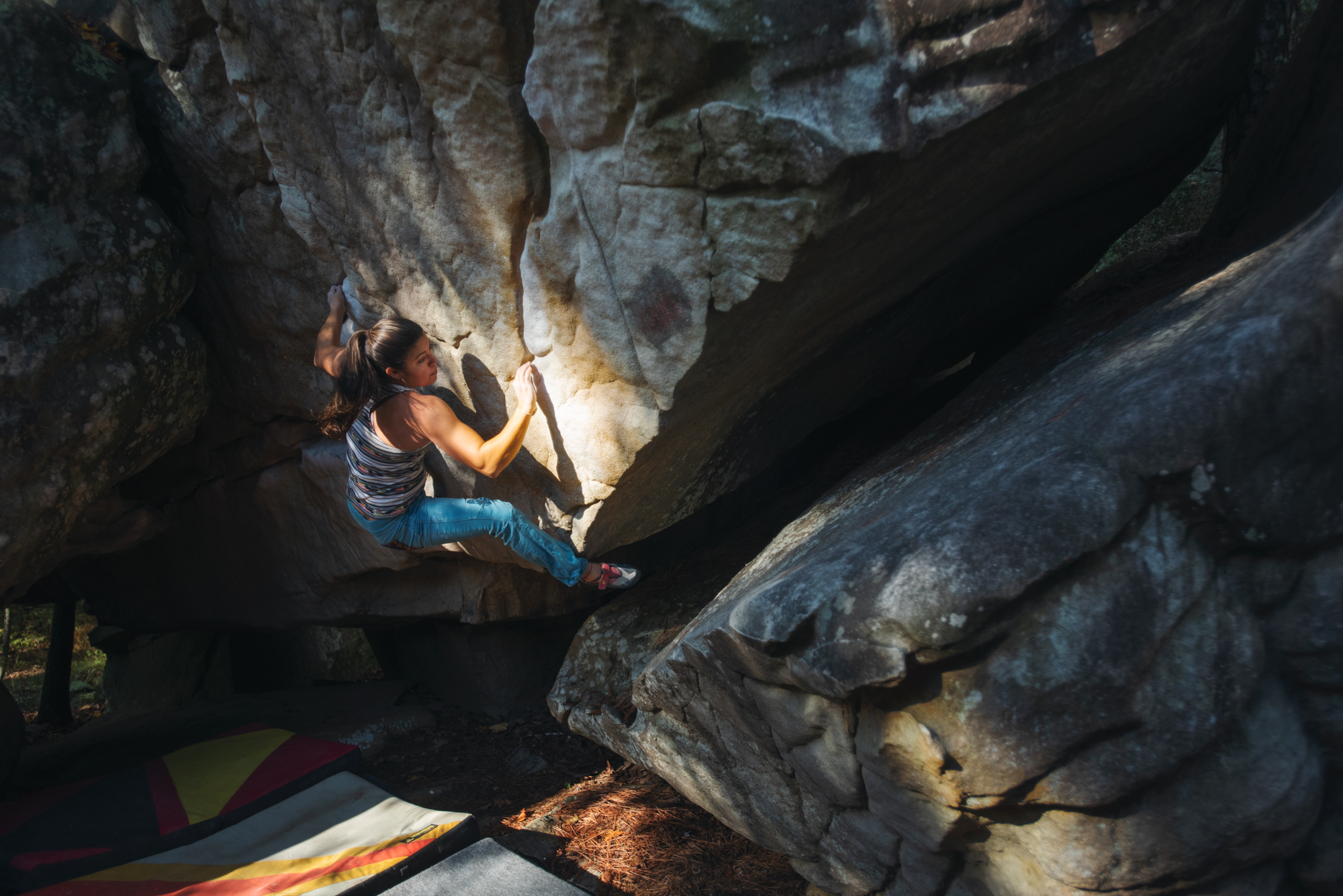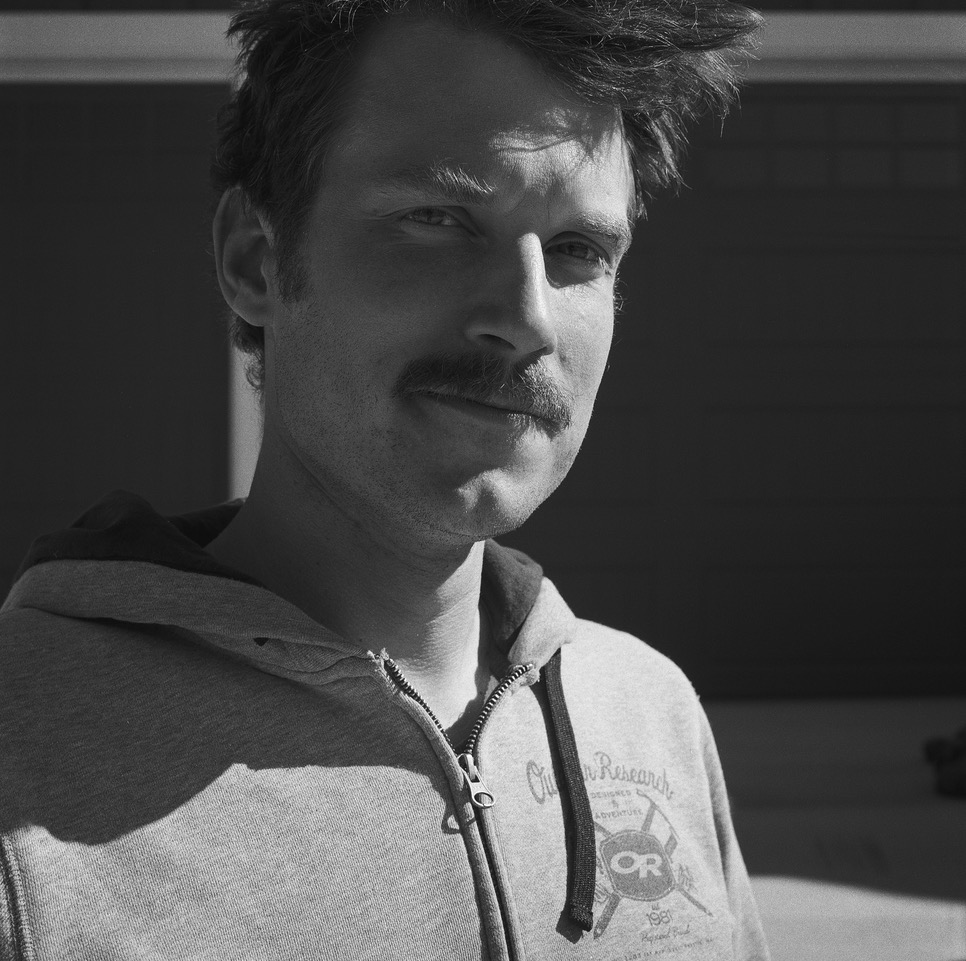Exposure: Francois Lebeau Interview

Photo Benjamin Rosser
Exposure is a series that turns the lens on our creative contributors.
For Francois Lebeau creativity and the outdoors have always gone together. After picking up a camera at an early age he was hooked, and pursued photography as a career. When he turns his lens on the sport, the San Francisco based French Canadian captures the essence of the climbing scene around him, using a variety of formats to document the people he meets on the road.
How did you first get into photography?
That’s a really good question. I’ve been playing with cameras for so long; I believe the first time I touched a camera seriously was when I was 10 or 11. We were spending a lot of time in a cabin that summer and it had very big windows with birdfeeders just outside. My mom had an old FM Nikon with a couple of lenses and she lent it to me so I could take photos of the birds passing by the feeder. I don’t know how many rolls of films I passed but it got expensive for my Mom! The next summer, I went to a summer camp for two weeks—with a focus on photography. That was the first time I worked in a darkroom. Since then, I haven’t stopped.
How did you develop your photography from there?
I was mostly an autodidact all through my teenage years. Just from pure interest, I was taking photos here and there and started to make homemade movies with my brother and sister with my Dad’s freshly bought Hi8 camera. I had also an uncle who was a photographer, and he mentored me in the darkroom. (Fun fact, his name was also François and we share the same date of birth, October 28th.) At the end of my teens, the dreaded moment came when you need to choose a career path. My Mom always taught me to do what felt right, so naturally I did a cinema degree and then I hadn’t had enough so did a photography degree straight after. But my interest in professional photography came when I started to be on set, assisting professional photographers. That’s where I really learned my light, developed my sense for good content and worked with people who knew what they were doing. I started to understand that light could make the whole difference in an image. In the last year of my photography degree, I started rock climbing as well and did my first road trip to Horse Pens 40. I brought a film camera and was fascinated to capture climbers in their zone, playing with body geometry and expression. I was so happy with the result that I made those images a triptych set for my final student exhibit. That’s when my climbing photography started.
As you got deeper into the sport, how did you develop your style of climbing photography?
The style, for me, is in constant progression. And interestingly, only lately I’ve been more conscious about my signature. At the beginning, when you’re fresh out of school, you want to have a signature right away, something to differentiate you from others. Only a few have those steps ahead, but they are not far ahead from you. A style, I think, comes with consistency, perseverance and sensitivity. Now, with a few years under my belt, I can say that I have preferences with my subjects, with the light that I am more comfortable to shoot in and all the others elements that construct my image. Developing is maybe not the right word for me, cause I didn’t. I just kept shooting what was interesting to me and the repetition of it built a correlation that lead to a specific esthetic. And in the past year, I’ve been aware of what I like, and I am trying to confront it by shooting in different conditions or different lights. I’m all for constant learning.
You've worked with a variety of different media; your C330 portraits in particular stand out in the way they have captured the climbing scene. How do you approach taking those, how does using that camera differ and what are you looking for in the image?
The core of my work since the beginning has always revolved around people. I’ve been fascinated by everybody’s stories and their raw personas, without filters and masks. I think people don’t let their guard down very often, showing their true colors. In our society, being vulnerable is not very trendy, it’s not well seen. I think when people let those down, you access their true beauty and the authenticity of people.
Doing portraits gives me those small windows of opportunity to capture the reality of the people who trust me enough to let me do it. My Mamiya Project is my main avenue to do so. I have been working on a collection of portraits that illustrate the people who make our community, at large. My main network is the climbing circle, but I’m aiming at a wider scale: Photographers, idols, passionate people, secret ninjas, creators, legends. The souls that make our outdoor community magic and so special.
The interesting part for me is that I’ve been using that C330 Mamiya film camera to make that series. It’s a medium format, twin lens film camera from the 60s. I just love to use that camera for portraiture, it slows down everything, put the guard down and makes the act of taking an image more precious. I like to just reserve that camera for those portraits for now, it makes it even more special.
What advice would you give to anyone looking to get into photography and experiment with film and different formats?
Just try. Those films cameras are not too expensive anymore and they’re much easier to get. Maybe your parents (or even more your grandparents) have those cameras hidden in boxes. It’s worth checking. Ask your friends, rent one or just buy one; they are great tools. If you learned your photography from digital, I’d practice a little bit on your digital manual mode cause in film, every click could be replaced by the sound cha-ching. Film is not free, but it sets a different approach and pace. You observe more, you take your time, you try to make every photo worth the click. Try, experiment and do your homework. There is tons of info on the web as well. The hashtag #filmisnotdead doesn’t exist for nothing. If you dive in film, I’d read about the zone system by Ansel Adams, refine your skills at exposure and jump right in. Have fun!
Essentials: Sterling rope, big wall harness comboed with a saddle, my trustworthy Nikon and a few fixed lenses
Favorite locations: My favorite place to shoot is nothing specific but more specific time of year. It’s all about light. It can make an awful place look good and vice versa
Photo Essays: Phil Schaal: A Retrospective








